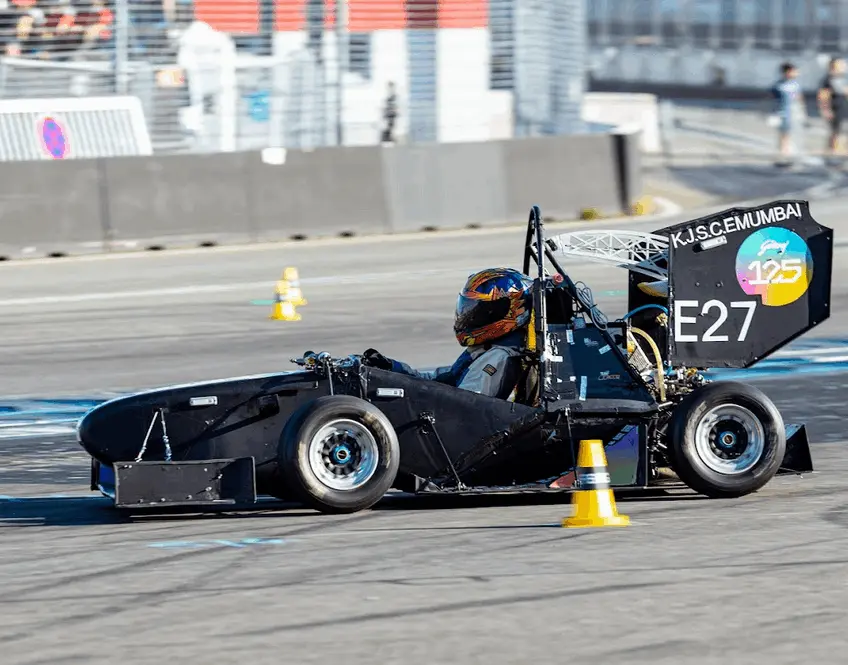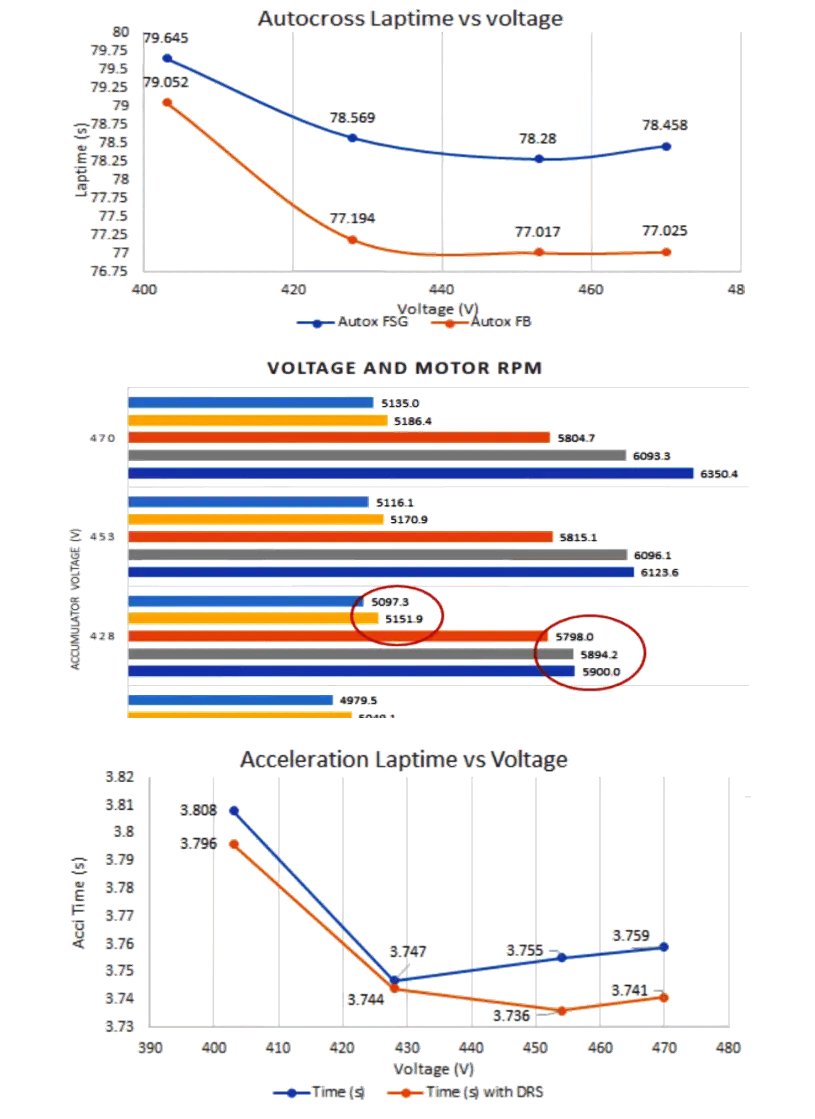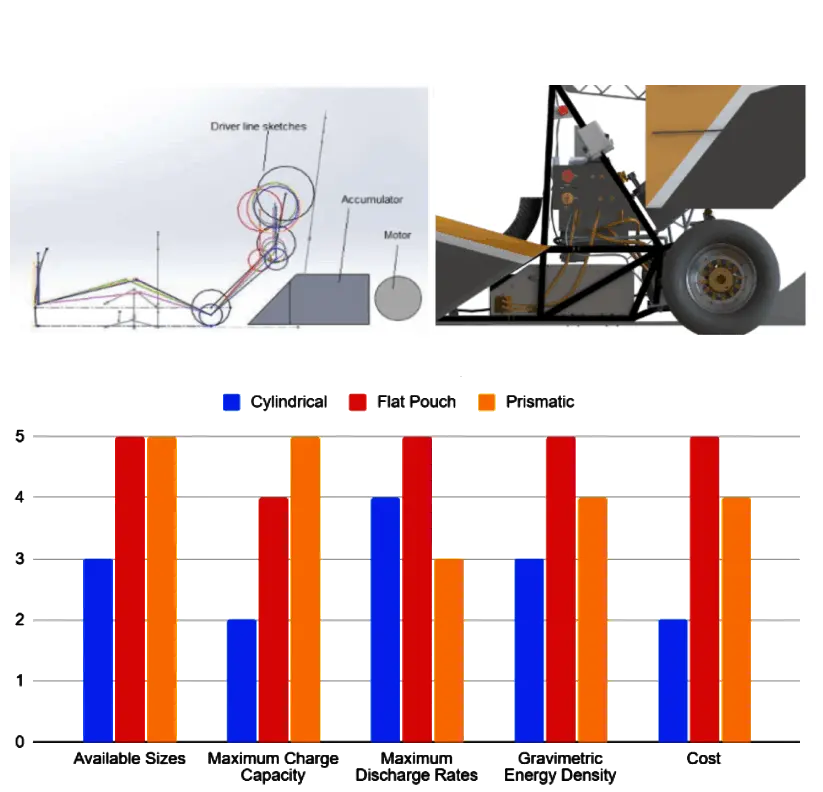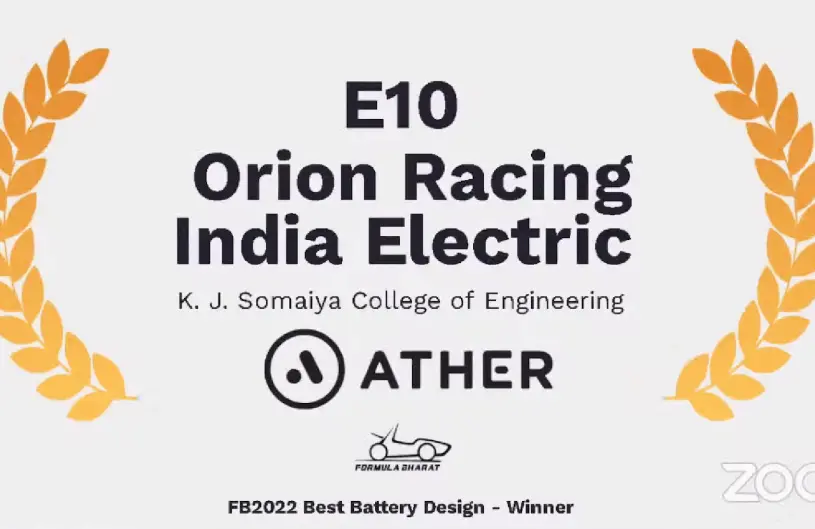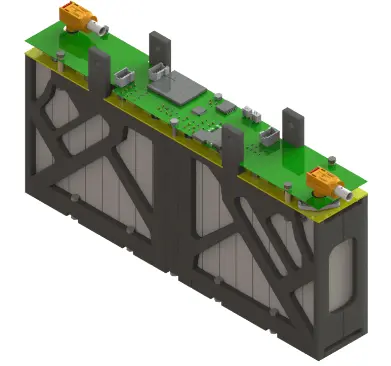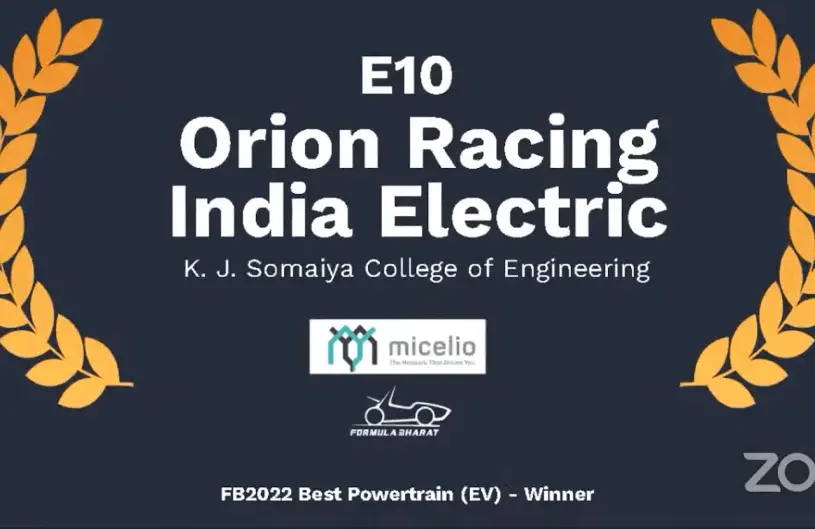The next step is selection of the cell format. The main formats considered were cylindrical, flat pouch and prismatic. The main factors looked at were packaging efficiency, availability of cells, as well as mechanical constraints such as cooling possibilities and ease of manufacturing. After performing market research, we found that flat pouch cells satisfy all the above requirements. Cylindrical cells do not have sufficient current delivery capability and thus require parallel strings of cells, which add weight and manufacturing difficulty. Flat pouch cells are available in much higher varieties of capacity and current draw, and thus offer the flexibility to fit into any design.
In order to maximize available volume, as well as keep the center of gravity as close to the center as possible, the battery container was designed with a sloping face. The angle of the slope matches the incline of the drivers’ seat, thus allowing the accumulator container to move further forward, releasing space for the motor and drivetrain behind it.
The advantage of flexible and lightweight stack drove us towards the idea of 3D printing. We chose FR-ABS as material for stack because it fitted in our requirements under electrical, mechanical and flame retardant criteria. Since the accumulator is a high voltage electrical device, insulation is of utmost importance for the safety of the driver and the engineers working on the vehicle and the battery pack itself.
